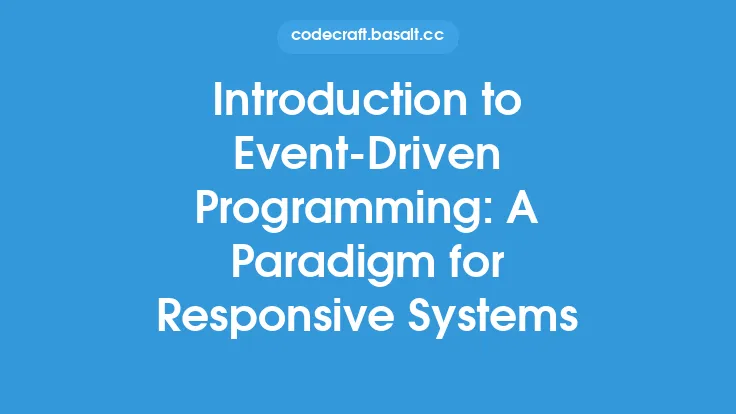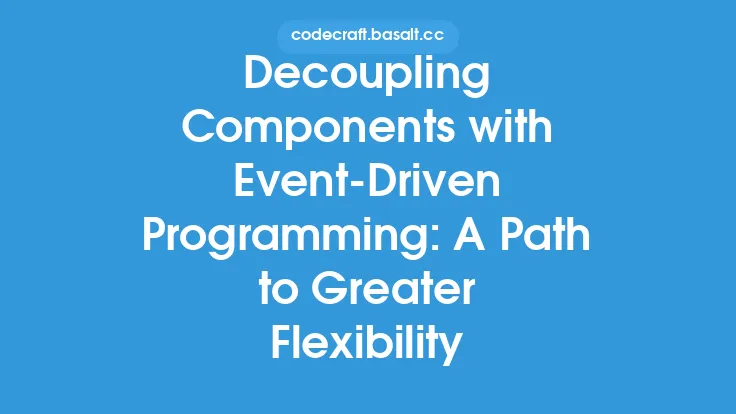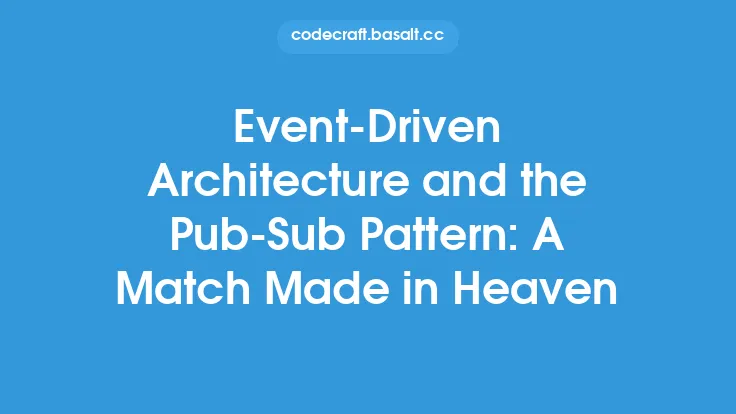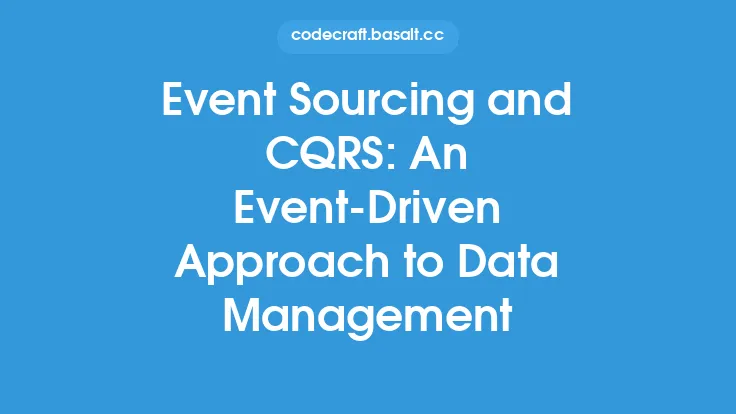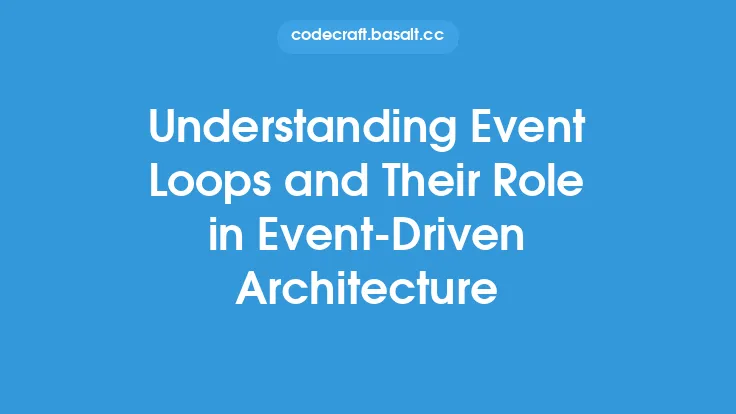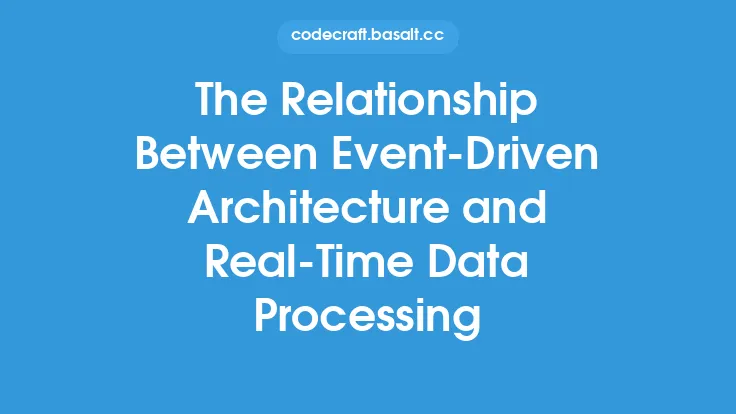Event-driven architecture (EDA) is a fundamental approach to designing scalable systems, where the production, detection, and consumption of events are the primary drivers of the system's behavior. In an EDA system, events are used to trigger reactions, notifications, or actions, allowing the system to respond to changing conditions, user interactions, or other stimuli. This approach has gained popularity in recent years due to its ability to provide loose coupling, scalability, and flexibility, making it an attractive choice for building modern software systems.
Key Components of Event-Driven Architecture
The key components of an EDA system include event producers, event consumers, event routers, and event stores. Event producers are responsible for generating events, which can be triggered by user interactions, changes in the system's state, or external stimuli. Event consumers, on the other hand, are responsible for processing events and taking appropriate actions. Event routers are used to route events from producers to consumers, while event stores are used to store and manage events.
Event-Driven Architecture Patterns
There are several patterns that are commonly used in EDA systems, including the publish-subscribe pattern, the event-streaming pattern, and the request-response pattern. The publish-subscribe pattern involves event producers publishing events to a topic or channel, which are then subscribed to by event consumers. The event-streaming pattern involves event producers generating a stream of events, which are then processed by event consumers. The request-response pattern involves event producers sending requests to event consumers, which then respond with a result.
Benefits of Event-Driven Architecture
The benefits of EDA include loose coupling, scalability, and flexibility. Loose coupling refers to the ability of components to operate independently, without being tightly coupled to each other. This allows for greater flexibility and maintainability, as components can be modified or replaced without affecting other parts of the system. Scalability refers to the ability of the system to handle increased loads and traffic, without compromising performance. Flexibility refers to the ability of the system to adapt to changing requirements and conditions.
Challenges of Event-Driven Architecture
While EDA offers many benefits, it also presents several challenges, including event handling, event routing, and event storage. Event handling refers to the ability of the system to handle events correctly, including detecting, processing, and responding to events. Event routing refers to the ability of the system to route events from producers to consumers, including handling event routing errors and exceptions. Event storage refers to the ability of the system to store and manage events, including handling event storage errors and exceptions.
Event-Driven Architecture and Microservices
EDA is often used in conjunction with microservices architecture, where each microservice is designed to handle a specific business capability or domain. In a microservices-based EDA system, each microservice can act as an event producer or consumer, allowing for loose coupling and scalability. This approach allows for greater flexibility and maintainability, as microservices can be modified or replaced without affecting other parts of the system.
Event-Driven Architecture and Cloud-Native Applications
EDA is also well-suited for cloud-native applications, where scalability, flexibility, and loose coupling are essential. Cloud-native applications are designed to take advantage of cloud computing principles, including on-demand resources, scalability, and high availability. EDA provides a natural fit for cloud-native applications, as it allows for loose coupling, scalability, and flexibility, making it easier to build and deploy cloud-native applications.
Best Practices for Implementing Event-Driven Architecture
When implementing EDA, there are several best practices to keep in mind, including defining clear event boundaries, using standard event formats, and implementing event handling mechanisms. Defining clear event boundaries refers to the ability to define the scope and context of events, including the data and metadata associated with each event. Using standard event formats refers to the ability to use standardized event formats, such as JSON or Avro, to ensure consistency and interoperability. Implementing event handling mechanisms refers to the ability to handle events correctly, including detecting, processing, and responding to events.
Tools and Technologies for Event-Driven Architecture
There are several tools and technologies available for building EDA systems, including Apache Kafka, Amazon Kinesis, and Google Cloud Pub/Sub. Apache Kafka is a popular open-source event-streaming platform, designed for high-throughput and scalable event processing. Amazon Kinesis is a fully managed event-streaming platform, designed for real-time data processing and analytics. Google Cloud Pub/Sub is a fully managed event-messaging platform, designed for scalable and reliable event processing.
Conclusion
In conclusion, event-driven architecture is a fundamental approach to designing scalable systems, where the production, detection, and consumption of events are the primary drivers of the system's behavior. EDA offers many benefits, including loose coupling, scalability, and flexibility, making it an attractive choice for building modern software systems. By understanding the key components, patterns, and best practices of EDA, developers can build scalable, flexible, and maintainable systems that meet the needs of today's fast-paced and ever-changing business landscape.
